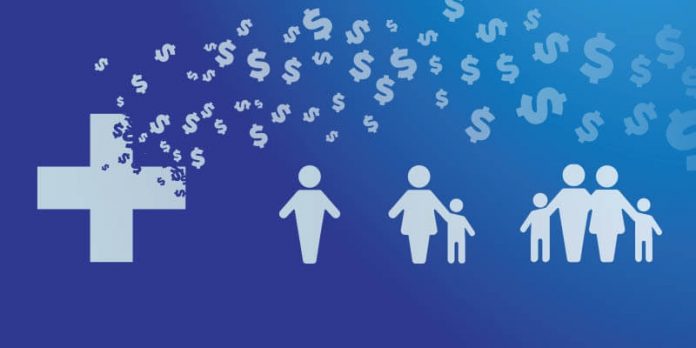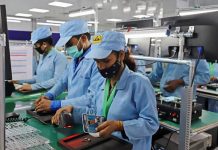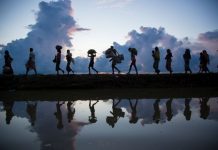This article is written by Meera Patel, from Maharaja Sayajirao University, School of Law, Vadodara. This article highlights the measures taken up by the public health care system during the COVID-19 pandemic.
Table of Contents
Introduction
Coronavirus disease which is also known as COVID-19 is an infectious deadly disease. It has taken over our lives since January 2020. It is a physical transmitting virus. There are no treatments and vaccines for COVID-19 at the moment but many countries are conducting various clinical trials to overcome the current situation. Personal health measures are the only precautions that need to be taken up at the moment but other than that, there are various public as well as private health care institutions that have taken up a load of treating the already infected populations.
Availability of resources
Even the wealthiest countries of the world such as the USA, the UK, Australia, etc have been trying to come to terms with the fact that they have been facing a shortage of resources that include:
- Personal Protective Equipment (PPE kits)
- Ventilators
- COVID treatment centres
- Beds for patients
- Monetary funds for treatment
Overseeing all the setbacks, the healthcare personals have been gambling with their lives at stake to help out the public. The government too has been bargaining for their share in the international medicine/ vaccine/ treatment/ precautionary resources’ supply chain.
During the bloodthirsty fight for necessary resources, there are countries like Thailand, Germany, Kenya, etc who have blocked the export of face masks because they are facing resource shortages at the moment. On the other hand, there are countries like India who have supplied hydroxychloroquine, an anti-malaria medicine drug to 55 countries, commercially.
Similarly, various countries bear a deficiency of PPE kits and ventilators but the supply of these resources has been cut off and is delivered to the countries who are willing to bid the highest price for the same.
PPE and respiratory devices are one of the most necessary commodities that are needed to overcome the ongoing pandemic but they are the least available resources at the moment too. With a scarce supply of such resources, many low-income countries have been facing a very hard time. These countries who fall under the low-income countries have no other options but to rely on the supply chains.
As bad as it sounds, even during such times when countries are supposed to support each other and become one, the monopoly of power and the hunger to secure all the available resources isn’t letting the countries unite.
Thus, because of the shelf cleaning attitude of the rich countries, it is the low-income dependent countries that suffer. Various UNICEF reports state that the UN has been able to obtain only one-tenth of the 240 million masks that are required in these low-income countries.
Testing at the community level is very important but countries who are running low on resources have been suffering a shortage of testing kits but there is a chance that these countries might suffer a serious constraint due to the already limited diagnostic strength.
The coronavirus pandemic has created a lot of chaos in the world and the unparalleled shortage of resources globally has tied the hands of the public healthcare systems. Even though countries like China have increased the exports and production of face masks, PPE kits, and respiratory devices, the prices have gone through the roof and the countries aren’t able to afford such expensive resources.
As for the situation in India, doctors and healthcare institutes have been treating COVID-19 affected patients while wearing PPE kits but Indian para medical staff faces a shortage of these kits at the moment as they are too expensive and they are also underway too much pressure to protect and conserve these resources as much as possible.
The number of COVID-19 patients has been increasing daily all over the world but at the same time, the COVID centres are running out of resources such as oxygens, ventilators, beds, etc. Therefore overseeing the lack of resources the government has ordered the supply chains to prioritize the supply of resources to the hospitals first and then later on to the industries.
Digital healthcare technology in the public health care
Overseeing the non-technological resources such as the masks and PPE kits, the technological healthcare systems needed in hospitals are equally necessary.
The coronavirus pandemic has injured the economy of the world in a very bad way. Scientists are working day in and out to search for the antibodies needed to fight coronavirus but at the same time, the need of the hour and the most important defence is a good and efficient personal health care system.
Even with all the old school types of healthcare services and precautions, the technology will always be used to optimize the health care services. Therefore, digital technology has been installed to address and treat the ongoing pandemic which also includes the immediate outbreak response as well as the impact cushioning.
This decade has proved to be the change of the digital technology of the health care systems because the main task of such a company is to skyrocket the support of public health measures.
The relationship between the private and public sectors is the milestone of digital technologies. These tech advances will not only help the health care providers during the ongoing COVID-19 pandemic but will also demonstrate the practical need of patients and the public by using them as a formal healthcare tool or for private usage.
Although these advances are really helpful, it is necessary to check its technological maturity as well as its impact and side effects on health outcomes before they are put to use on a large scale.
The fight between government hospitals and private hospitals
According to a survey by the Ministry of healthcare and survey, India, it has been proved that private hospitals in India acquire about two-thirds of hospital beds in India and nearly 80 percent of the available and usable ventilators in India. But at the same time, the private hospitals are treating a very less number of coronavirus infected patients.
The population of India prefers to get treated by the government healthcare because they prefer efficiency over comfort and because of similar reasons, the private health sector has been suffering losses as they are being sidelined by the public health care system during the COVID-19 pandemic.
Other than that fact, treatment by a normal healthcare institute per day is 18,000/- and this expense would be borne by insurance companies but on the other hand, a private hospital would charge about 50,000/- to 1,00,00/- per day. The already financially strained families would never wish to drain out their money on private hospitals.
Therefore, the ongoing pandemic has created a problem overall as the private hospitals have the resources but they charge a lot whereas the public healthcare institutes have comparatively fewer resources but they are being approached by almost all the COVID-19 affected patients in India.
Immunization in the context of COVID-19 pandemic
While talking about public healthcare services, the provision of immunization of the patients is the primary need today. Immunization is necessary as it prevents the spread and major infestation of COVID which is a disease whose vaccine is yet to be found and made.
Because the antibodies haven’t been found and tried, the process of immunization is the only field that the healthcare services can go to. Time to time immunization of patients is the best go-to option during such a time.
If healthcare is successful in carrying out this process, the lack of resources and the spread of this disease will not be a problem anymore.
The healthcare sector is doing as much as it can to stick to promoting activities that transmit fewer diseases and encourages the public to reduce the risks of transmission of the coronavirus.
Listed below is a set of immunization services that the Indian public healthcare sector provides to its patients;
- The bioscience team of India is constantly working towards developing a new vaccine as the COVID-19 situation escalates.
- Constant encouragement of busting COVID-19 related myths and pushing the public to adopt accurate facts because wrong immunization techniques endanger the public to the risk of catching coronavirus.
- Organizing a schedule for the immunization process for the admitted patients.
- Notifying other healthcare services for adapting age-appropriate essential health care services in the context of vaccines and medicines.
- Constant promotion of social distancing at the health care centres.
- Providing extra care for patients with pre-existing health conditions such as heart conditions, diabetes, etc.
- The health care personnel are supposed to identify and make people aware of the signs and symptoms of COVID-19 diseases and help to adhere to guidance if a person catches the coronavirus.
Epidemic Disease Act, 1897
Even though the COVID-19 situation is considered a pandemic at the moment, globally, this situation falls under the Epidemic Disease Act of the Indian Constitution.
The central and the state government of India state that India is empowered enough to oversee the proper regulation regarding COVID health matters. The Epidemic Diseases Act, 1897 is the primary legislative bodywork that is referred to at the central level so that the prevention of the spread of such epidemics.
This particular act entitles the central legislation to empower the required changes so that epidemics can be dealt with easily. The act also acknowledges the fact that it is necessary to disseminate the regulations that deal with the epidemics within the boundaries of India’s jurisdiction.
The deputy commissioner of every district in India is supposed to act as the revenue collector as well as the district magistrate, therefore, that person is supposed to maintain the law and order in their jurisdiction. Overseeing this fact, during the times of such epidemic outbreaks, the government delegates its state responsibilities to the deputy commissioners usually through the state health acts or municipal corporation acts.
Under this particular act, the government and the public health care which falls under the government reserve the rights to prescribe regulations such as:
- Health inspection of citizens and non-citizens
- Vaccination
- Artificial immunization of people travelling via road, air, or waterways
- Segregating the people who have been travelling in hospitals
- Provide temporary accommodation
- Create quarantine and COVID treatment centres
According to Section 2 of the above-stated act, the deputy governor is also empowered to co-regulate the state monetary resources to determine how all the expenses in regards to the health care are set.
Most of such acts are specified in the Public Health Acts. These provisions provide the municipal commissioners with quarantine and other required and necessary powers. These powers include:
- The person who is infected with any particular communicable disease can be put in a separate and segregated ward of any hospital or health care centre for treatment
- Any building or part of the building can be used as a treatment centre if needed. Similarly, any building or a part of the building or area under the jurisdiction of the particular commissioner can be cleaned and disinfected which are likely to retain the communicable diseases.
- Special measures can be taken in case of an outbreak of very dangerous diseases such as coronavirus. They can announce a public notice that gives out some guidelines that must be followed by the public to prevent the spread of such diseases.
Conclusion
So many people have been infected from this humanitarian crisis but not all are impacted similarly by this pandemic because of various reasons out of which, the financial reason is the primary for most of the people.
As this disease has overturned to be a pandemic, the cutthroat fight for the resources has escalated a lot over the period since the virus started to spread out.
Besides testing and quarantining the infected as well as non-infected people, it is visible that the plethora of infected cases in India is due to the weak public healthcare system and the lack of efficient resources.
India is the 2nd country with the highest number of increasing cases but at the same time, India also oversaw the recovery rate of its patients which is 70.16 percent. Public healthcare and the personal, as well as social measures, need to go in a parallelly as everyone has the moral responsibility of preventing the risk of transmission of this disease, surviving this time using their strained economic conditions, have access to the basic day to day commodities such as food security, health security, financial security, etc.
Lastly, the guidance of the healthcare sector is necessary as the humanitarian and development of all the operating communities as well as the local level organizations that are involved in the preparations for preventing the transmission of the COVID-19 pandemic any further.
References
- https://www.who.int/news-room/feature-stories/detail/attacks-on-health-care-in-the-context-of-covid-19
- https://www.loc.gov/law/help/health-emergencies/india.php
- C:/Users/abc/Downloads/WHO-2019-nCoV-immunization_services-FAQ-2020.1-eng.pdf
LawSikho has created a telegram group for exchanging legal knowledge, referrals and various opportunities. You can click on this link and join:
 Serato DJ Crack 2025Serato DJ PRO Crack
Serato DJ Crack 2025Serato DJ PRO Crack











 Allow notifications
Allow notifications



